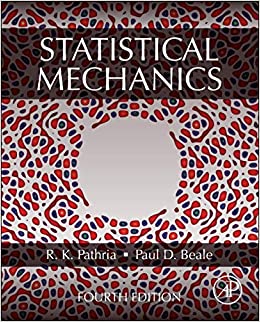Modify the Bragg-Williams approximation (12.5.29) to include a short-range order parameter (s), such that [begin{aligned}& bar{N}_{++}=frac{1}{2} q
Question:
Modify the Bragg-Williams approximation (12.5.29) to include a short-range order parameter \(s\), such that
\[\begin{aligned}& \bar{N}_{++}=\frac{1}{2} q N \gamma\left(\frac{1+\bar{L}}{2}\right)^{2}(1+s), \bar{N}_{--}=\frac{1}{2} q N \gamma\left(\frac{1-\bar{L}}{2}\right)^{2}(1+s), \\& \bar{N}_{+-}=2 \cdot \frac{1}{2} q N \gamma\left(\frac{1+\bar{L}}{2}\right)\left(\frac{1-\bar{L}}{2}\right)(1-s) .\end{aligned}\]
(a) Evaluate \(\gamma\) from the condition that the total number of nearest-neighbor pairs is \(\frac{1}{2} q N\).
(b) Show that the critical temperature \(T_{c}\) of this model is \(\left(1-s^{2}\right) q J / k\).
(c) Determine the nature of the specific-heat singularity at \(T=T_{c}\), and compare your result with both the Bragg-Williams approximation of Section 12.5 and the Bethe approximation of Section 12.6.
Step by Step Answer:






